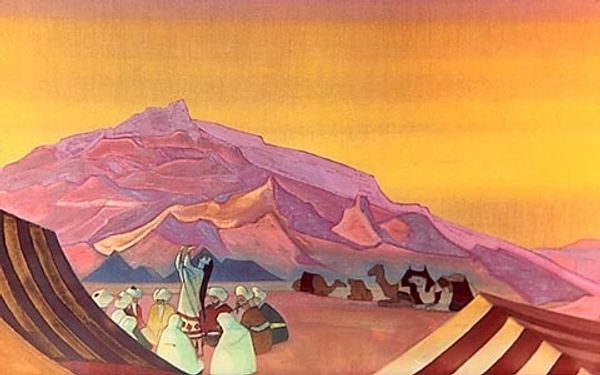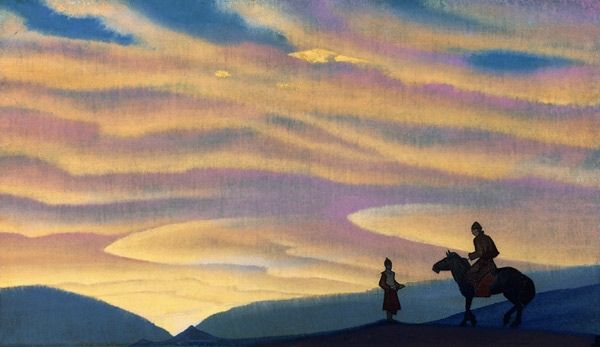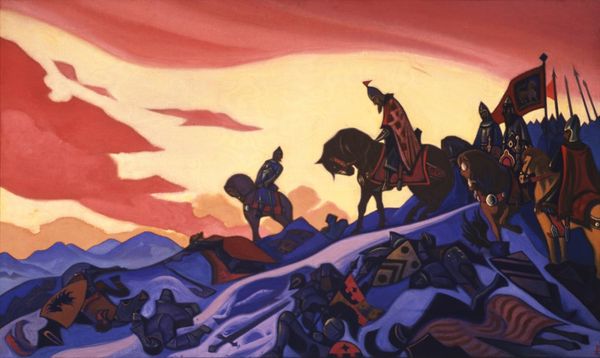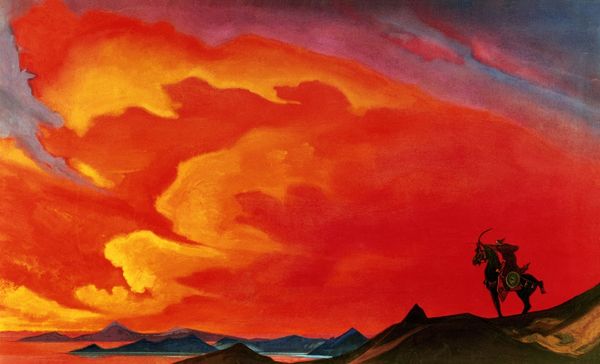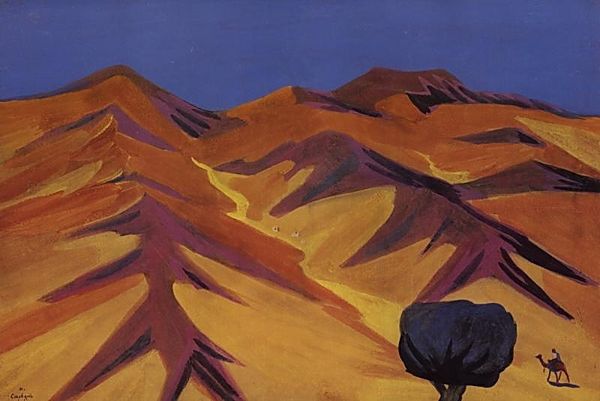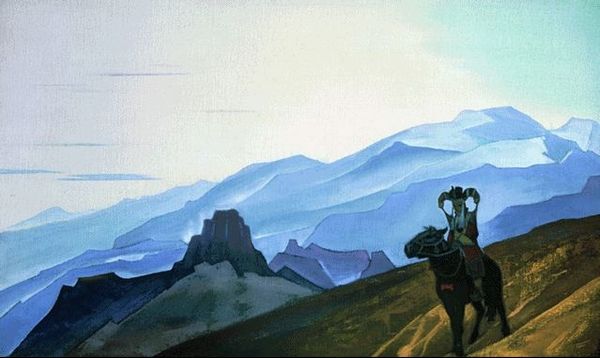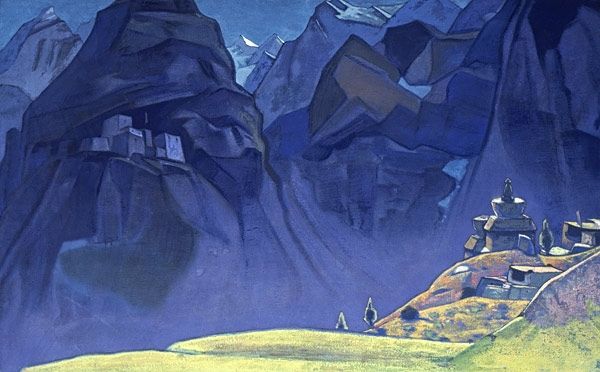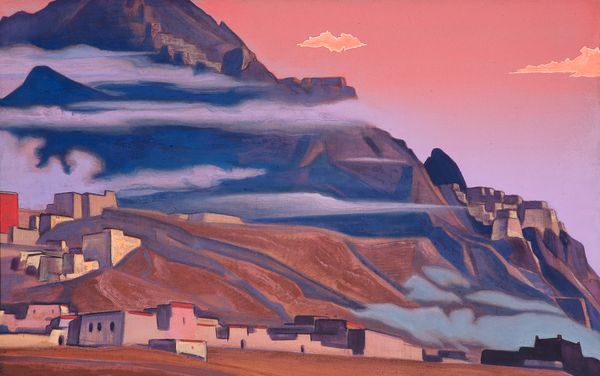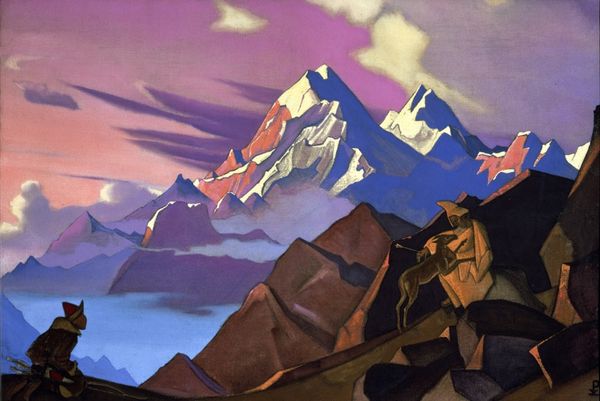
tempera, painting, oil-paint, architecture
#
tempera
#
painting
#
oil-paint
#
landscape
#
figuration
#
oil painting
#
mountain
#
orientalism
#
modernism
#
architecture
Copyright: Public domain
Nicholas Roerich painted "Tibetan Camp" with tempera on canvas sometime in the first half of the 20th century. Roerich was deeply influenced by the spiritual and philosophical traditions of the East, particularly those of Tibet. The painting invites us to consider the complexities of cultural exchange and representation. How does Roerich, as a Russian artist, interpret and portray Tibetan culture, and what does this tell us about the power dynamics inherent in such cross-cultural encounters? The image evokes a sense of mysticism and serenity but it also makes me wonder about the realities of life in a Tibetan camp and the impact of outsiders depicting it. The golden and purple hues evoke a dreamlike quality, but the darker figures of the tents and people suggest a more grounded, human presence. The vast landscape dwarfs the figures, emphasizing the smallness of human existence against the backdrop of nature's grandeur. What might the inhabitants of this camp feel, living in such proximity to the sublime, yet potentially facing harsh living conditions?
Comments
No comments
Be the first to comment and join the conversation on the ultimate creative platform.

